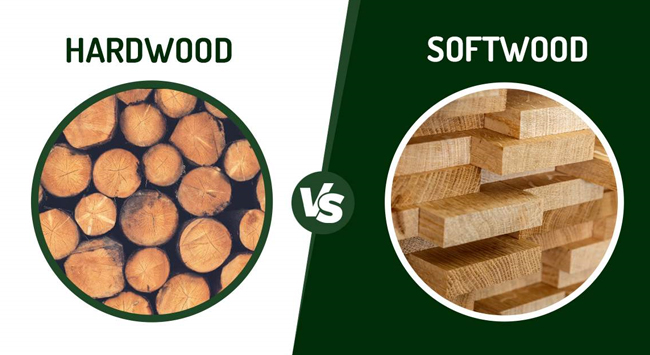Friday, May 17, 2024
|
Listen to this news
|

Are you planning for your next cladding, panelling, or decking project? But you are bit confused about making your best choice because most of the time it gets stuck between choosing hardwood and softwood. Right?
So, today, Wood & Panel enlightens on the understanding of the significant difference between these two. To know the preference you should be aware about your choice first. Let’s delve deep into the segment.
The main difference between hardwood and softwood is that hardwood trees are typically slower growers and are considered angiosperm, deciduous trees (shed their leaves annually), which leads to a denser wood, whereas softwood trees are gymnosperms, meaning they are evergreen trees (do not shed their leaves). he definition and classification of whether a tree is considered a hardwood or softwood comes down to the seed they produce, not the density of the timber.
Hardwood Timber
Authentic hardwood timber is renowned for its unparalleled style and performance. Originating from angiosperm trees, hardwood features elements that efficiently distribute water and nutrients throughout the wood. The pores within the wood grain manage this distribution, resulting in a denser timber grain that enhances its durability and strength.
Prime examples of hardwood timber:
Softwood Timber
Softwood is a versatile timber option known for its stunning, seamless finish. Originating from gymnosperm trees, softwood lacks pores and instead relies on medullary rays and tracheids for water transport and sap production. This unique structure results in a lower density, making it a lightweight yet durable choice.
Prime examples of softwood timber:
Hardwood vs. Softwood
The difference between hardwood and softwood has less to do with the consistency of the wood and more to do with the type of tree that produces the wood. While hardwood is typically denser, it’s defined by its source: deciduous trees, which lose their leaves annually. Softwoods, on the other hand, come from evergreen trees with needles and cones.
Workability
When its come to workablility, softwoods tend to be easier than hardwoods because of their composition and density. Softwood tends to have a softer surface that offers much flexibility and versatility than hardwood. Therefore, it doesn’t tend to compromise its strength and durability.
Sustainability
Softwood trees have a very fast growth rate compared to hardwood trees, and they’re easily regrown, making them a more sustainable option. In fact, softwoods make up roughly 80% of all timber, making it an abundant option for construction and manufacturing. While hardwood doesn’t really offer such sustainable options.
Despite of many advantages of softwoods, hardwoods also remain popular choice to the woodworkers because of the robustness. Also, hardwood is another name of longevity and offers enduring elegance and superior craftsmanship.
Image source: Pexiv, white knight consulting
Read more news on: softwood, hardwood, woodworker, woodworking, timber
Get more updates on American woodworking industry through: www.woodandpanel.us
Tags: cladding, decking product, hardwood specialist, softwood, wood, wood and panel, woodworking, woodworking industry
Comments: